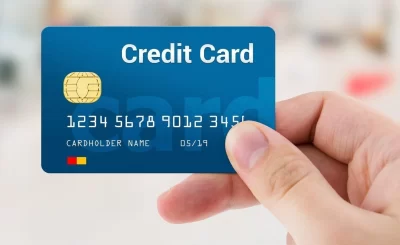Let’s be honest. The digital nomad life isn’t all sunset photos and laptop selfies. Between navigating foreign currencies, dodging sketchy Wi-Fi, and managing finances across time zones, the logistics can be a real headache. Your wallet, stuffed with crumpled receipts and three different currencies, feels the pain most acutely.
But what if your credit cards could do more than just pay for things? What if they were a core part of your operational toolkit, saving you money, time, and a whole lot of stress? Here’s the deal: with the right strategy, they absolutely can be.
The Non-Negotiable: No Foreign Transaction Fees
This is the golden rule, the one piece of advice that’s non-negotiable. A standard credit card will often slap you with a 3% fee on every single purchase you make outside your home country. That might not sound like much, but it adds up frighteningly fast. A $3,000 month in expenses becomes a $90 fee—that’s a nice dinner (or several) in Lisbon or Chiang Mai, gone.
You need a card that explicitly advertises no foreign transaction fees. Honestly, it’s the baseline for any international spender. Don’t even consider a card without this feature. It’s like buying a car without wheels; it just won’t get you where you need to go.
Mastering the Multi-Card Wallet
Relying on a single card is a risky move. Networks go down. Fraud alerts freeze accounts at the worst possible moments. The savvy nomad carries a small, curated portfolio. Think of it as diversifying your financial assets, much like you might diversify your income streams.
The Primary Workhorse Card
This is your go-to for everyday spending. You want a card that earns valuable points on broad categories, like 2x points on all purchases. Cards like the Chase Sapphire Preferred® or the Capital One VentureOne are popular for a reason—they’re simple, effective, and build points you can use for travel later.
The Specialized Sidekick
This card covers your weak spots. Maybe it offers 3x or 4x points on groceries and dining—two of the biggest expenses for anyone living somewhere new. Or perhaps it’s the card you use exclusively for online subscriptions paid in your home currency to keep things tidy. Having a card for specific, high-spend categories maximizes your point-earning potential.
The Backup Plan
A different card, from a different bank, on a different payment network (if you primarily use Visa, get a Mastercard as a backup, and vice-versa). Keep this one tucked away for emergencies. When your primary card gets declined at a remote bus station, this backup will feel like a lifesaver.
Leveraging Travel Protections and Perks
Premium credit cards come with hidden armor. These benefits are often overlooked, but for a remote worker, they’re pure gold.
Trip Delay/Cancellation Insurance: A flight cancellation in a foreign country is a nightmare. A good card can reimburse you for hotels, meals, and even new tickets.
Lost Luggage Insurance: If the airline loses your bag—and with it your work gear and life—your card might cover the replacement cost.
Rental Car Insurance: Decline the expensive rental company coverage and let your credit card’s primary coverage take care of it. This alone can save hundreds per trip.
Cell Phone Protection: This is a game-changer. If your phone is damaged or stolen, your card might pay for the repair or replacement. For a digital nomad, your phone is your office, your map, your everything. Protecting it is critical.
Rewards: Making Your Spending Work for You
You’re spending money anyway. You may as well get something back. The key is to align your rewards with your lifestyle.
Flexible Travel Points: These are often the most valuable. You can transfer them to airline and hotel partners or redeem them through a portal for flights and stays. They give you the flexibility to book the best deal, not just what’s available with one brand.
Statement Credits: Some cards offer straightforward cash back or credits for travel purchases. Simple, effective, and easy to understand.
The goal isn’t to become a full-time “points hacker,” unless you want to. It’s simply to be intentional. Put your dining spend on the card that gives 4x back on dining. Use your 2x-everything card for the rest. It’s a small shift that yields big returns over a year of constant travel.
Operational Must-Haves: The Nitty-Gritty
Strategy is nothing without execution. Here are the practical habits you need to build.
Always Pay in Local Currency: When a machine or vendor offers you “Dynamic Currency Conversion” (DCC)—where they charge you in your home currency—always, always say no. The exchange rate is terrible. It’s a fee in disguise. Just choose to pay in the local currency.
Set Up Travel Notifications: While many banks have gotten better at detecting travel, it’s still wise to notify them of your plans through your online banking app. A frozen card is a major disruption.
Use a Virtual Wallet: Add your cards to Apple Pay or Google Pay. For small, contactless payments and for times you forget your physical wallet, it’s a lifesaver.
Automate Payments: Set up autopay for at least the minimum payment. Time zone math and spotty internet are no excuse for a missed payment and a damaged credit score.
A Final Thought on Financial Fluidity
In the end, a smart credit card strategy for the location-independent isn’t about collecting plastic. It’s about creating fluidity. It’s about building a financial system that moves with you, protects you, and even rewards you for the life you’ve chosen to lead. It turns a necessary tool—spending money—into a source of security and opportunity. And that, you know, is a feeling more valuable than any points balance.










